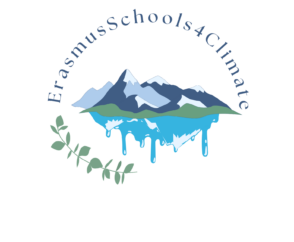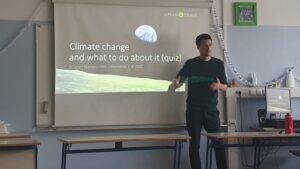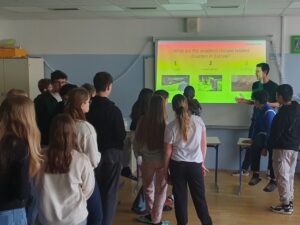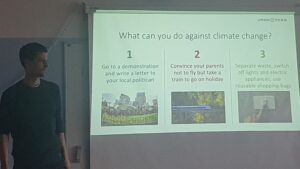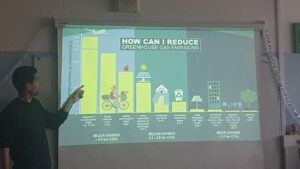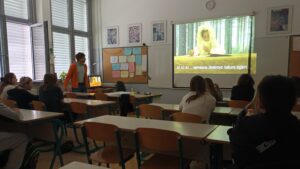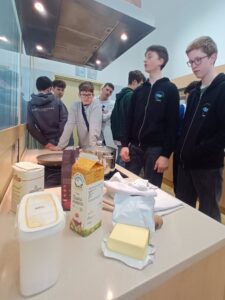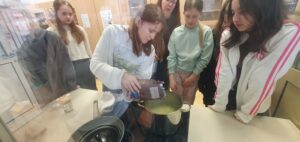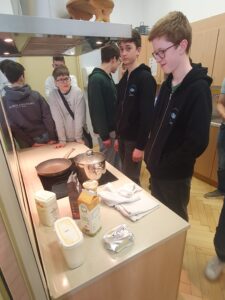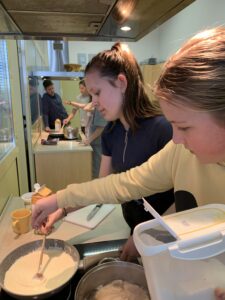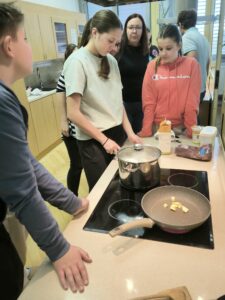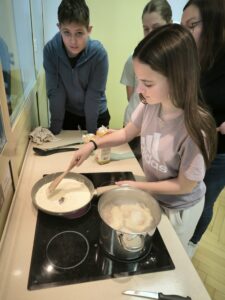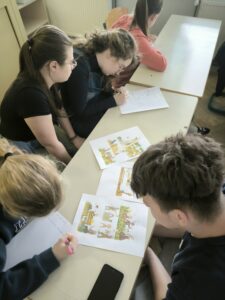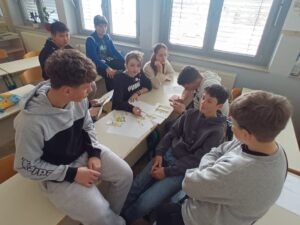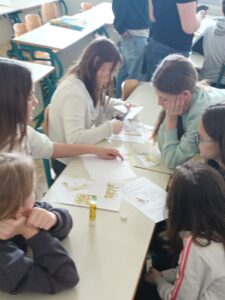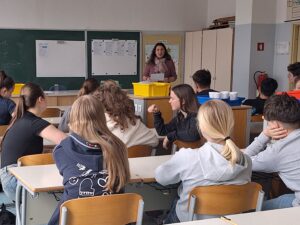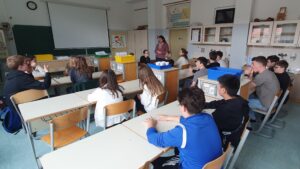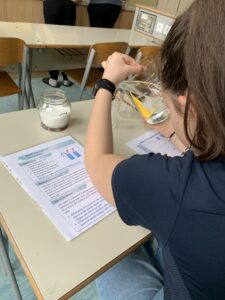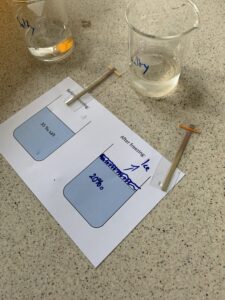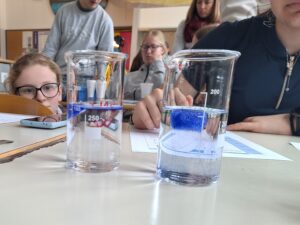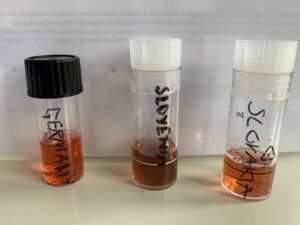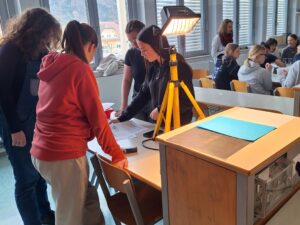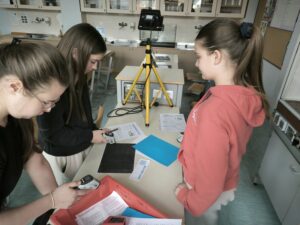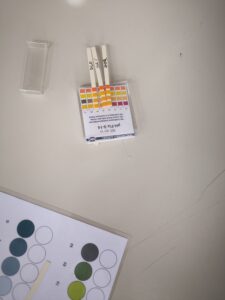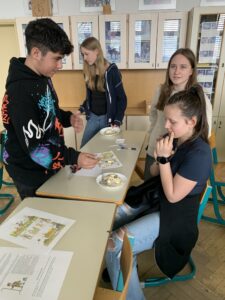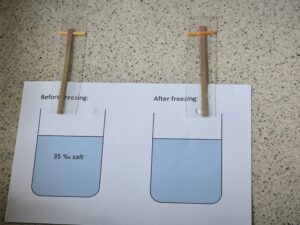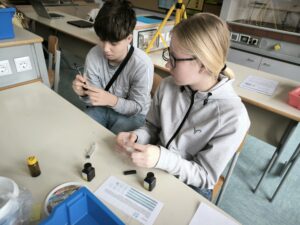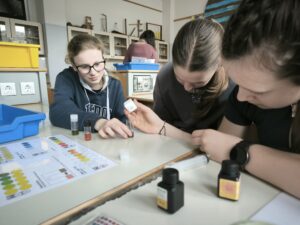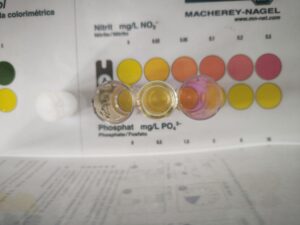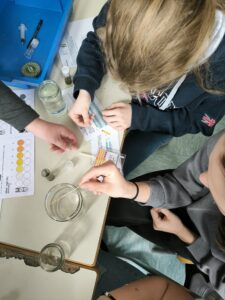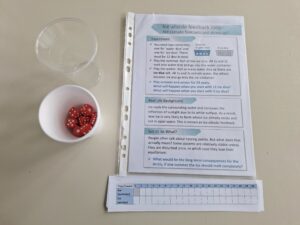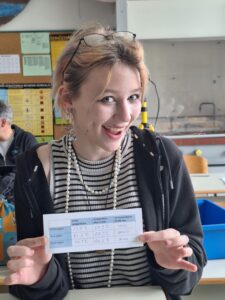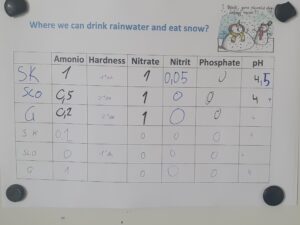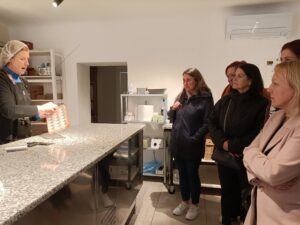In the morning, we attended a lecture by Dr. Jonas Sonnenschein from the Slovenian Umanotera foundation, which focuses on sustainable development. We explored key aspects of climate change and its causes, such as man-made greenhouse gas emissions, especially from fossil fuels. Then there is global inequality, which means that richer countries contribute the most to emissions, but poorer countries often suffer the worst consequences. Another decisive factor is the influence of companies. Companies like BP have focused on individual responsibility while continuing to pollute on a large scale. But what can be done? Real solutions require government policies, systemic change, energy transformation and public support. While individual actions matter – such as reducing meat consumption or choosing sustainable transport – lasting change must come from collective efforts and structural reforms.
This lecture also included a fun quiz. Here we had to get not only our brain threads moving, but our whole body moving as we answered by moving around the room. In the next activity, we split into two groups – one group explored science experiments using snow brought from different countries, while the other group cooked the traditional Slovenian dish “žganci”. In the afternoon, the groups swapped activities. Cooking was a challenge (and the results were questionable!), but we learned about historical Slovenian food and storytelling traditions. We also watched a student film retelling the legend of a boy called Kekec and his bravery in saving Mojca. We then created short comic stories with illustrations. In the afternoon, we played soccer with our Slovenian hosts and finished the day by packing for the upcoming hike, having dinner with our host families and relaxing.
During the experiments, we tested the cleanliness of snow samples and studied how melting ice affects sea levels. We learned that when ice melts in the ocean, sea levels don’t rise—but when land-based ice melts, it does. Since most ice is on land (like in Antarctica), this contributes directly to rising sea levels and flooding.
